The historical background and cultural significance of Tiffany lamps
04 Dec 2023
0 Comments
I. Historical Background of Tiffany Lamps
A. Introduction to Tiffany Studios
1. Founding and early years: Tiffany Studios was established by Louis Comfort Tiffany in the late 19th century, gaining prominence for its innovative approach to decorative arts.
2. Emergence of the Art Nouveau movement: The studio's growth coincided with the Art Nouveau movement, which emphasized organic forms and intricate designs inspired by nature.

B. Louis Comfort Tiffany's Innovations
1. Introduction of opalescent glass: Tiffany revolutionized lamp design by introducing opalescent glass, characterized by its vibrant colors and unique textures.
2. Development of the copper foil technique: Departing from traditional leaded glass methods, Tiffany pioneered the copper foil technique, allowing for intricate and detailed designs.
3. Influence of nature in design: Tiffany's work was heavily influenced by the natural world, with motifs inspired by flowers, plants, and insects becoming iconic in his lamp designs.
II. Design Elements and Techniques
A. Opalescent Glass and Its Characteristics
1. Creation and use in Tiffany lamps: Opalescent glass was crafted by combining various metallic oxides, resulting in a stunning array of colors that were skillfully incorporated into lampshades.
2. Varied colors and textures: The use of opalescent glass allowed for a wide spectrum of colors and textures, enabling intricate and visually striking designs.
B. The Copper Foil Technique
1. Tiffany's departure from traditional methods: Unlike the traditional leaded glass technique, Tiffany used copper foil to wrap and solder individual glass pieces, allowing for greater flexibility and detail.
2. Benefits and challenges of the technique: While the copper foil technique offered enhanced design possibilities, it posed challenges in terms of structural integrity and required highly skilled craftsmanship.
C. Nature-Inspired Motifs
1. Flora and fauna in lamp designs: Tiffany's fascination with nature is evident in the inclusion of botanical and animal motifs, creating visually stunning and harmonious compositions.
2. Incorporation of natural elements into lampshades: Lampshades often featured intricate patterns of flowers, dragonflies, and other natural elements, showcasing Tiffany's commitment to the organic aesthetic.

III. Cultural Significance of Tiffany Lamps
A. Rise to Popularity
1. Exhibition at international events: Tiffany Studios gained widespread recognition through exhibitions at international events, showcasing their lamps to a global audience.
2. Patronage from affluent individuals: Wealthy patrons sought out Tiffany lamps as symbols of luxury and artistic sophistication, contributing to their rising popularity.
B. Symbolism and Aesthetics
1. Representations of wealth and luxury: Tiffany lamps became synonymous with opulence, symbolizing the wealth and refined taste of those who owned them.
2. Contribution to the Art Nouveau movement: Tiffany's work played a crucial role in shaping the Art Nouveau movement, with his designs influencing the broader artistic and cultural landscape.
C. Enduring Legacy
1. Collector's items and museum exhibitions: Tiffany lamps continue to be highly sought-after collector's items, and museum exhibitions worldwide celebrate their artistic and historical significance.
2. Influence on contemporary design trends: The legacy of Tiffany lamps can be seen in contemporary design trends, with artists and designers drawing inspiration from Tiffany's innovative techniques and nature-inspired motifs.
A. Introduction to Tiffany Studios
1. Founding and early years: Tiffany Studios was established by Louis Comfort Tiffany in the late 19th century, gaining prominence for its innovative approach to decorative arts.
2. Emergence of the Art Nouveau movement: The studio's growth coincided with the Art Nouveau movement, which emphasized organic forms and intricate designs inspired by nature.

B. Louis Comfort Tiffany's Innovations
1. Introduction of opalescent glass: Tiffany revolutionized lamp design by introducing opalescent glass, characterized by its vibrant colors and unique textures.
2. Development of the copper foil technique: Departing from traditional leaded glass methods, Tiffany pioneered the copper foil technique, allowing for intricate and detailed designs.
3. Influence of nature in design: Tiffany's work was heavily influenced by the natural world, with motifs inspired by flowers, plants, and insects becoming iconic in his lamp designs.
II. Design Elements and Techniques
A. Opalescent Glass and Its Characteristics
1. Creation and use in Tiffany lamps: Opalescent glass was crafted by combining various metallic oxides, resulting in a stunning array of colors that were skillfully incorporated into lampshades.
2. Varied colors and textures: The use of opalescent glass allowed for a wide spectrum of colors and textures, enabling intricate and visually striking designs.
B. The Copper Foil Technique
1. Tiffany's departure from traditional methods: Unlike the traditional leaded glass technique, Tiffany used copper foil to wrap and solder individual glass pieces, allowing for greater flexibility and detail.
2. Benefits and challenges of the technique: While the copper foil technique offered enhanced design possibilities, it posed challenges in terms of structural integrity and required highly skilled craftsmanship.
C. Nature-Inspired Motifs
1. Flora and fauna in lamp designs: Tiffany's fascination with nature is evident in the inclusion of botanical and animal motifs, creating visually stunning and harmonious compositions.
2. Incorporation of natural elements into lampshades: Lampshades often featured intricate patterns of flowers, dragonflies, and other natural elements, showcasing Tiffany's commitment to the organic aesthetic.

III. Cultural Significance of Tiffany Lamps
A. Rise to Popularity
1. Exhibition at international events: Tiffany Studios gained widespread recognition through exhibitions at international events, showcasing their lamps to a global audience.
2. Patronage from affluent individuals: Wealthy patrons sought out Tiffany lamps as symbols of luxury and artistic sophistication, contributing to their rising popularity.
B. Symbolism and Aesthetics
1. Representations of wealth and luxury: Tiffany lamps became synonymous with opulence, symbolizing the wealth and refined taste of those who owned them.
2. Contribution to the Art Nouveau movement: Tiffany's work played a crucial role in shaping the Art Nouveau movement, with his designs influencing the broader artistic and cultural landscape.
C. Enduring Legacy
1. Collector's items and museum exhibitions: Tiffany lamps continue to be highly sought-after collector's items, and museum exhibitions worldwide celebrate their artistic and historical significance.
2. Influence on contemporary design trends: The legacy of Tiffany lamps can be seen in contemporary design trends, with artists and designers drawing inspiration from Tiffany's innovative techniques and nature-inspired motifs.
Tags:

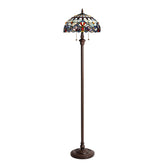
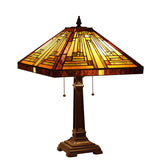
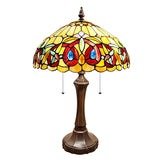
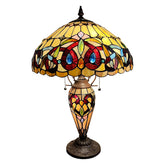
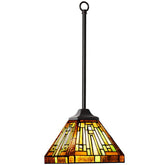

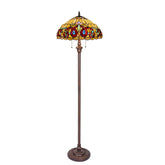
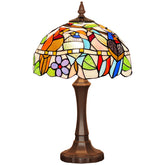
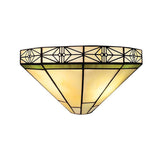
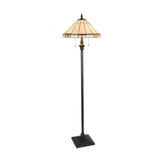

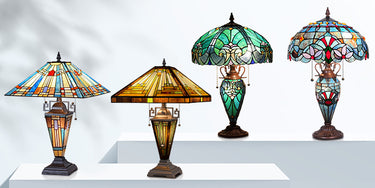
Leave a comment
Please note, comments need to be approved before they are published.